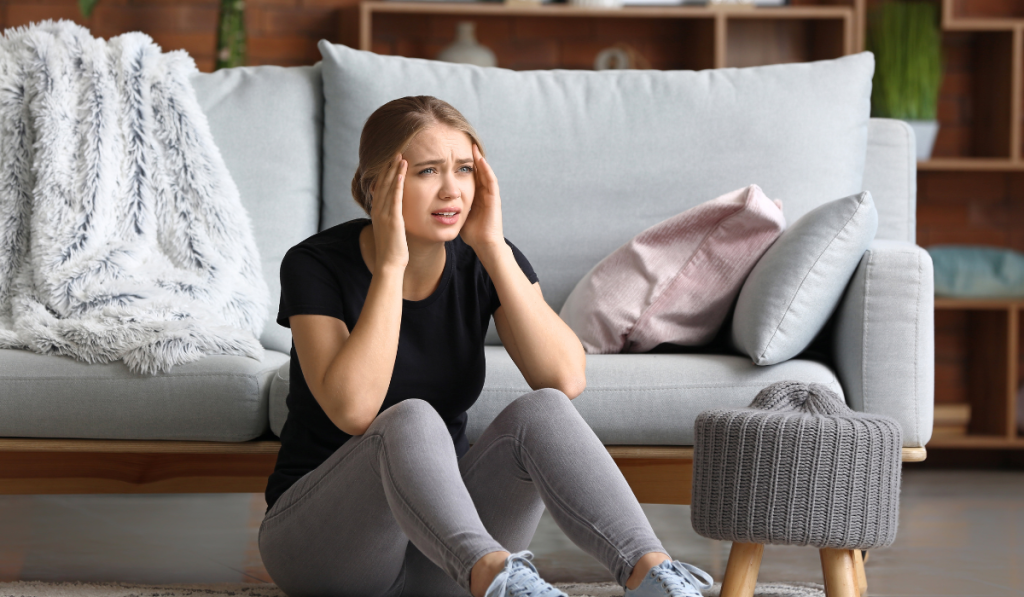
Is Therapy Worth It for Men in the LGBTQ Community?
April 16, 2025
Overcoming Social Anxiety and Getting a Job: You Are Capable!
May 2, 2025
When panic sets in, it can feel overwhelming and all-consuming. Whether you experience occasional panic episodes or struggle with chronic anxiety, having effective strategies to regain control of your mind and body is essential. While professional help can be beneficial, self-soothing techniques can also be used in the moment to ease distress. Below, we explore some of the best tools to help calm your mind when panic strikes.
1. Deep Breathing Techniques
Deep breathing is one of the most effective calming techniques for panic. When panic takes over, breathing can become shallow and rapid, leading to dizziness and increased anxiety. Practicing controlled breathing can help slow your heart rate and refocus your attention on the present moment.
How to do it:
- Try the 4-7-8 breathing method: inhale through your nose for 4 seconds, hold for 7 seconds, and exhale through your mouth for 8 seconds.
- Box breathing: Inhale for four counts, hold for four counts, exhale for four counts, and hold for four counts before repeating.
Focusing on your breath activates the parasympathetic nervous system, which helps bring your body out of a heightened state of stress.
2. Grounding Exercises
Grounding techniques help bring your attention away from panic and back to the present moment. They engage your senses, reducing feelings of fear and dissociation.
How to do it:
- The 5-4-3-2-1 Method: Identify five things you can see, four things you can touch, three things you can hear, two things you can smell, and one thing you can taste.
- Holding a Cold Object: Placing an ice cube in your hand or splashing cold water on your face can shock your nervous system into refocusing.
Grounding techniques are powerful tools for overcoming panic, as they redirect one’s focus and anchor one in reality.
3. Progressive Muscle Relaxation (PMR)
Panic episodes often cause muscle tension, making it hard to relax. Progressive muscle relaxation (PMR) helps release physical tension and promote calmness.
How to do it:
- Start by tensing a muscle group (such as your fists) for five seconds, then slowly release.
- Move through different muscle groups in your body, from your toes up to your shoulders.
PMR is an effective way to ease the physical symptoms of panic and create a sense of relaxation.
4. Visualization and Guided Imagery
Imagining a peaceful place can be a helpful way to interrupt panic and replace distressing thoughts with calming ones.
How to do it:
- Close your eyes and picture a place where you feel safe and at peace—perhaps a beach, forest, or favorite childhood spot.
- Engage your senses by imagining the sounds, smells, and textures of this environment.
This technique can trick your brain into believing you are in a calmer state, reducing the severity of panic episodes.
5. Journaling and Expressive Writing
Writing can be a powerful way to process emotions and release anxious thoughts. Keeping a journal can serve as an outlet for self-expression and help alleviate mental overload.
How to do it:
- Keep a notebook where you can jot down your thoughts when feeling anxious.
- Try stream-of-consciousness writing, where you write whatever comes to mind without judgment.
Journaling can help externalize worries and provide clarity, making it an excellent self-help tool.
6. Aromatherapy and Essential Oils
Certain scents have a calming effect on the brain and can help lower stress levels.
How to do it:
- Use essential oils such as lavender, chamomile, or bergamot in a diffuser or apply a small amount to your wrists.
- Inhale deeply while focusing on the soothing scent to promote relaxation.
Aromatherapy can serve as a simple yet effective tool to create a calming atmosphere in moments of distress.
7. Physical Movement
Movement is an excellent way to release pent-up energy and regulate emotions.
How to do it:
- Take a walk or stretch for a few minutes to release tension.
- Try yoga poses like the child’s pose or forward bends to calm the nervous system naturally.
- Engage in rhythmic activities, such as running or dancing, to redirect nervous energy.
Movement reduces stress and produces endorphins, which help improve mood and decrease anxiety.
8. Listening to Calming Music or Sounds
Music has a direct impact on mood and can serve as an instant stress reliever.
How to do it:
- Create a playlist of calming music, such as instrumental sounds, nature noises, or slow-tempo melodies.
- Use sound therapy apps that offer binaural beats, which can promote relaxation and reduce anxiety.
Music therapy is widely recognized for calming the mind and body, making it a go-to resource for easing panic.
Get Help Today
Learning how to overcome panic involves having reliable tools at your disposal. While professional support is valuable, these effective calming techniques can help you regain control in distress. By practicing deep breathing, grounding exercises, visualization, and other self-soothing methods, you can equip yourself with practical ways to navigate panic episodes. The key is to find what works best for you and incorporate these tools into your daily routine.
If you’re struggling with frequent panic episodes, remember that you’re not alone. Implementing these techniques can be a crucial step toward managing anxiety and improving your overall well-being.
_________________________________________________________________________________
Looking for treatment for an eating disorder, anxiety, depression, trauma, or postpartum mood disorder?
Evolve Counseling Services is a specialized team of Licensed Therapists providing treatment in Paoli.



